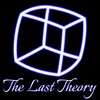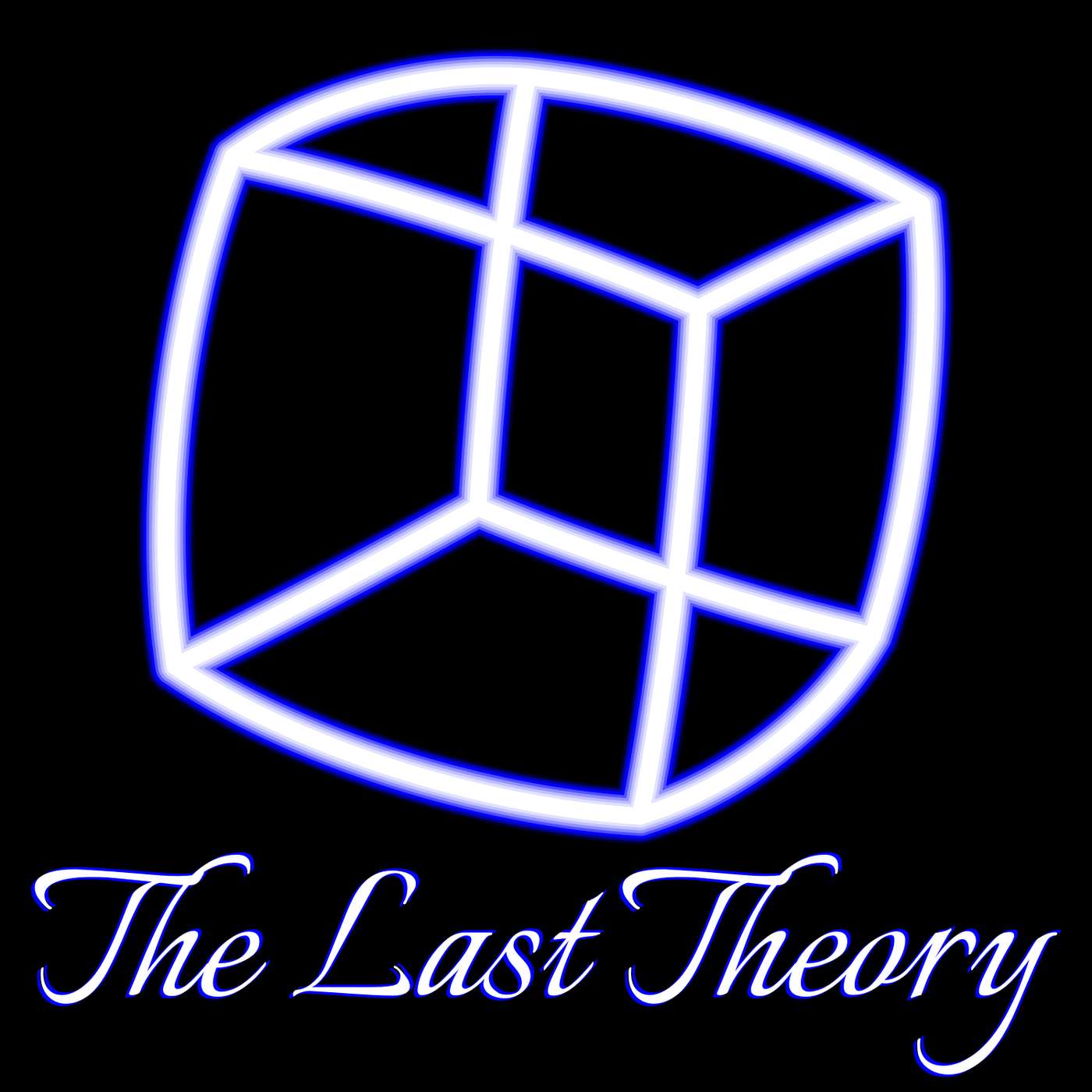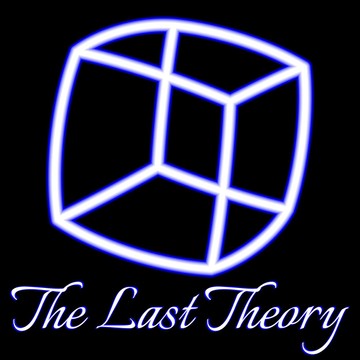

The Last Theory
Mark Jeffery
The Last Theory is an easy-to-follow exploration of what might be the last theory of physics. In 2020, Stephen Wolfram launched the Wolfram Physics Project to find the elusive fundamental theory that explains everything. On The Last Theory podcast, I investigate the implications of Wolfram's ideas and dig into the details of how his universe works. Join me for fresh insights into Wolfram Physics every other week.
Episodes
Mentioned books

Dec 29, 2022 • 7min
Where I’m going with Wolfram Physics in 2023
I’ve been blown away by your response to The Last Theory in 2022.How am I going to thank you for reading, listening, watching and subscribing?Well, by bringing you more Wolfram Physics in the New Year, that’s how.Here are 7 directions I want to take The Last Theory in 2023.—I release The Last Theory as a video too! Watch here.The full article is here.Kootenay Village Ventures Inc.

Dec 22, 2022 • 10min
Why hypergraphs might be a good model of the universe with Jonathan Gorard
Wolfram Physics is based on hypergraphs.Why?What is it about hypergraphs that might make them a better model of the universe than, say, strings of characters, or cellular automata, or Turing machines?When I asked Jonathan Gorard this question, he gave an answer that was deeply insightful.It’s such a core question, so fundamental to why we should take the Wolfram model seriously, that I’ve listened to Jonathan’s answer over and over.—Jonathan GorardJonathan Gorard at The Wolfram Physics ProjectJonathan Gorard at Cardiff UniversityJonathan Gorard on TwitterThe Centre for Applied CompositionalityThe Wolfram Physics ProjectPeople and Concepts mentioned by JonathanRoger PenroseRafael SorkinTommaso BolognesiCausal Set TheoryHasse diagramRiemannian distanceStrings (of characters)Cellular automataTuring machinesLorentz invarianceGeneral covariance—I release The Last Theory as a video too! Watch here.Kootenay Village Ventures Inc.

Dec 15, 2022 • 11min
Is Wolfram Physics the next scientific revolution?
For the last few hundred years, all our theories of physics have been mathematical.If Stephen Wolfram is right, from now on, our most fundamental theories of physics may be computational.This shift from mathematics to computation feels to me like a scientific revolution.Recently, I asked Jonathan Gorard, who was instrumental in the founding of The Wolfram Physics Project, whether it feels to him, too, like a scientific revolution.“I think so,” he said. “I mean, it’s a strong statement, but I don’t think it’ll end up being too inaccurate.”(If you want to check out that part of our conversation, you can listen here or watch here.)Here’s why, in my mind, Wolfram Physics is the next scientific revolution.–I release The Last Theory as a video too! Watch here.The full article is here.Kootenay Village Ventures Inc.

Dec 8, 2022 • 9min
Why I took a chance on Wolfram Physics with Jonathan Gorard
Jonathan Gorard admits that it was a risk, for his academic career, to work on the Wolfram Physics project.In this third excerpt from my recent conversation with Jonathan, I asked him how he thought about that risk and why he decided to take it.He told me that the opportunity to work with Stephen Wolfram on this new model is a bit like being given an opportunity to work with von Neumann and Ulam on cellular automata, or with Turing, Church and Gödel on computational models, back in the early twentieth century.So I asked Jonathan whether he thought, as I do, that the reframing physics in terms of computation feels like we’re in a scientific revolution, as important as the reframing of physics in terms of mathematics several hundred years ago.“It’s a strong statement,” he replied, “but I don’t think it’ll end up being too inaccurate.”For me, the opportunity to talk to Jonathan about Wolfram Physics feels a bit like being given an opportunity to interview Dirac, Heisenberg, Pauli or Schrödinger back in the early days of quantum mechanics.These are exciting times.—Jonathan GorardJonathan Gorard at The Wolfram Physics ProjectJonathan Gorard at Cardiff UniversityJonathan Gorard on TwitterThe Centre for Applied CompositionalityThe Wolfram Physics ProjectPeople and Concepts mentioned by JonathanJohn von NeumannStanislaw UlamAlan TuringAlonzo ChurchKurt GödelQuantum information theoryUndecidabilityIrreducibilityManojna NamuduriXerxes D. ArsiwallaZX-Calculus and Extended Hypergraph Rewriting Systems I: A Multiway Approach to Categorical Quantum Information Theory – Jonathan Gorard, Manojna Namuduri, Xerxes D. ArsiwallaZX-Calculus and Extended Wolfram Model Systems II: Fast Diagrammatic Reasoning with an Application to Quantum Circuit Simplification – Jonathan Gorard, Manojna Namuduri, Xerxes D. ArsiwallaImage creditsJohn von Neumann – Los Alamos National LaboratoryStanisław Ulam – Los Alamos National LaboratoryFor images from the Los Alamos National Laboratory: Unless otherwise indicated, this information has been authored by an employee or employees of the Triad National Security, LLC, operator of the Los Alamos National Laboratory with the U.S. Department of Energy. The U.S. Government has rights to use, reproduce, and distribute this information. The public may copy and use this information without charge, provided that this Notice and any statement of authorship are reproduced on all copies. Neither the Government nor Triad makes any warranty, express or implied, or assumes any liability or responsibility for the use of this information.I release The Last Theory as a video too! Watch here.Kootenay Village Ventures Inc.

Dec 1, 2022 • 13min
What is the multiway graph in Wolfram Physics?
In Episode 15: Where to apply Wolfram’s rules? (listen to the audio ⋅ watch the video ⋅ read the article) I introduced a radical idea.When we’re applying a rule to a graph in Wolfram Physics, there are generally many possible places in the graph we could apply the rule, giving us many possible next states of the universe.Here’s the radical idea: rather than choose one of these possible universes, we choose not to choose. Instead, we keep each of them in mind.The trouble is, if we choose not to choose, the number of possible universes we have to keep in mind gets extremely large extremely quickly.To help us visualize all these possible universes, we’re going to need the multiway graph.It’s a crucial idea in Wolfram Physics.The multiway graph will allow us to derive aspects of quantum mechanics from Wolfram Physics.It’ll lead us to a concept of the observer that promises to resolve issues related to the collapse of the wavefunction that have plagued quantum mechanics ever since Schrödinger put his metaphorical cat into a metaphorical cage.And maybe, just maybe, it’ll lead us to a model of consciousness itself.–I release The Last Theory as a video too! Watch here.The full article is here.Kootenay Village Ventures Inc.

Nov 17, 2022 • 11min
From clockwork to computation in Wolfram Physics with Jonathan Gorard
This is the second of a series of excerpts from my recent conversation with Jonathan Gorard, who was instrumental in the founding of The Wolfram Physics Project.I asked Jonathan why he found the computational approach to physics so compelling.In his answer, he broached a wide range of fascinating topics in the philosophy of science:how we moved from a clockwork paradigm in the age of clockwork to a computational paradigm in the age of computation;how saying that the universe is computational is different from saying that the universe is a computer;how our adoption of mathematics as the basis for physics has biased us to think of space-time as continuous;how the history of science might have been different had Turing been born before Newton;how the Wolfram Model can be thought of as a way of building a constructivist foundation for physics.This led us to discuss a couple of the deeper questions of Wolfram Physics:is it possible to know whether the universe is continuous or discrete?does the hypergraph really exist?—Jonathan GorardJonathan Gorard at The Wolfram Physics ProjectJonathan Gorard at Cardiff UniversityJonathan Gorard on TwitterThe Centre for Applied CompositionalityThe Wolfram Physics ProjectPeople and Concepts mentioned by JonathanIsaac NewtonRené DescartesDemocritusJohn LockeBishop BerkeleyCorpuscularianismAtomismAlan TuringTuring machinesLambda calculusRecursively Enumerable FunctionsConstructivismL. E. J. BrouwerDavid HilbertIntuitionism—I release The Last Theory as a video too! Watch here.Kootenay Village Ventures Inc.

Nov 10, 2022 • 5min
Why I don’t like String Theory
In my conversation with Jonathan Gorard about the founding of the Wolfram Physics Project, I said that I don’t like String Theory.Now, I’ll admit, I don’t really understand String Theory.It’s highly mathematical. And I’m not much of a mathematician. Actually, that’s an understatement. I’m not a mathematician at all.So if there’s a problem in the relationship between String Theory and me, it might not be String Theory, it might be me.Sadly, admitting that I might be part of the problem doesn’t change anything between us. I still don’t like String Theory.Here’s why.–I release The Last Theory as a video too! Watch here.The full article is here.Kootenay Village Ventures Inc.

Nov 3, 2022 • 15min
The founding of the Wolfram Physics Project with Jonathan Gorard
In 2019, Jonathan Gorard and Max Piskunov goaded Stephen Wolfram into pursuing his ideas for a new kind of science.This led to the announcement of The Wolfram Physics Project in 2020.Last week, I talked to Jonathan Gorard about the revolutionary ideas that have come out of the project.In this first excerpt from our conversation, Jonathan talks about his instrumental role in the founding of The Wolfram Physics Project.We cover why the time was right in 2020... and why it had been wrong in 2002 when Stephen Wolfram published his book A New Kind of Science.We talk about how Wolfram Physics might take over from string theory, why Jonathan likes string theory... and why he doesn’t.It was a true pleasure to talk to Jonathan about what might prove a pivotal moment in the history of science.—Jonathan GorardJonathan Gorard at The Wolfram Physics ProjectJonathan Gorard at Cardiff UniversityPeople and ProjectsThe Centre for Applied CompositionalityThe Wolfram Physics ProjectStephen Wolfram’s announcement of the projectMax PiskunovSetReplace on GitHubConcepts mentioned by JonathanIrreducibilityUndecidabilityUniversalityCurrent algebraRegge theoryGauge theoryStandard ModelString theoryPoincaré groupMirror symmetryCalabi–Yau manifoldK3 surface—ImagesCalabi–Yau manifold CalabiYau5 by Andrew J. Hanson, Indiana University, who allows use with attributionFeynman diagram Feynmann Diagram Gluon Radiation by Joel Holdsworth, public domain—I release The Last Theory as a video too! Watch here.Kootenay Village Ventures Inc.

Oct 27, 2022 • 9min
Hypergraphs are everywhere
Wolfram Physics models the universe as a hypergraph.Maybe I’m just seeing things, but it seems to me that hypergraphs are everywhere: physics, chemistry, biology, neurology, ecology, sociology, technology.What I want to know is:Why?Why are hypergraphs everywhere?—Molecular structure Styrene-butadiene chain2 by Guido Raos, professor of chemistry, Politecnico di Milano, Italy licensed under CC BY-SA 4.0Metabolic pathway BRENDA pyrimidine metabolism by BRENDA – The Comprehensive Enzyme Information System licensed under CC BY 4.0Brain image Neurons & glia by The Eunice Kennedy Shriver National Institute of Child Health and Human Development (NICHD) licensed under CC BY 2.0Pelagic food web An in situ perspective of a deep pelagic food web by C. Anela Choy, Steven H. D. Haddock and Bruce H. Robison licensed under CC BY 4.0Social graph Partitions in my social graph by Matt Biddulph licensed under CC BY-SA 2.0Internet map Internet map by Matt Britt licensed under CC BY 2.5Feynman diagram Paarbildung by Ivan Baev licensed under CC BY-SA 3.0—I release The Last Theory as a video too! Watch here.The full article is here.Kootenay Village Ventures Inc.

Oct 13, 2022 • 16min
How big is the computer that runs the universe?
As you’ll know from Episode 8: Where’s the computer that runs the universe? ( read ⋅ listen ⋅ watch ), I have my doubts about the existence of a computer that’s whirring away, applying Wolfram’s rules to Wolfram’s graphs, performing the computations required to run our universe.This computer, if it exists, is necessarily invisible to us, and as I warned in Episode 12: Beware invisible things ( read ⋅ listen ⋅ watch ) we should be wary of what we can’t see.Still, I want to revisit this idea of a computer that runs the universe.I want to come at it from a slightly different direction.Rather than adopt the stance of the monkey with its hands over its eyes and insist that if I can’t see it, it’s not there, let’s suppose that there is a computer that runs the universe and ask a simple question:How big would it have to be?—Other episodes I mention:Episode 8: Where’s the computer that runs the universe? – read ⋅ listen ⋅ watchEpisode 12: Beware invisible things – read ⋅ listen ⋅ watchEpisode 15: Where to apply Wolfram’s rules? – read ⋅ listen ⋅ watch—I release The Last Theory as a video too! Watch here.The full article is here.Kootenay Village Ventures Inc.


